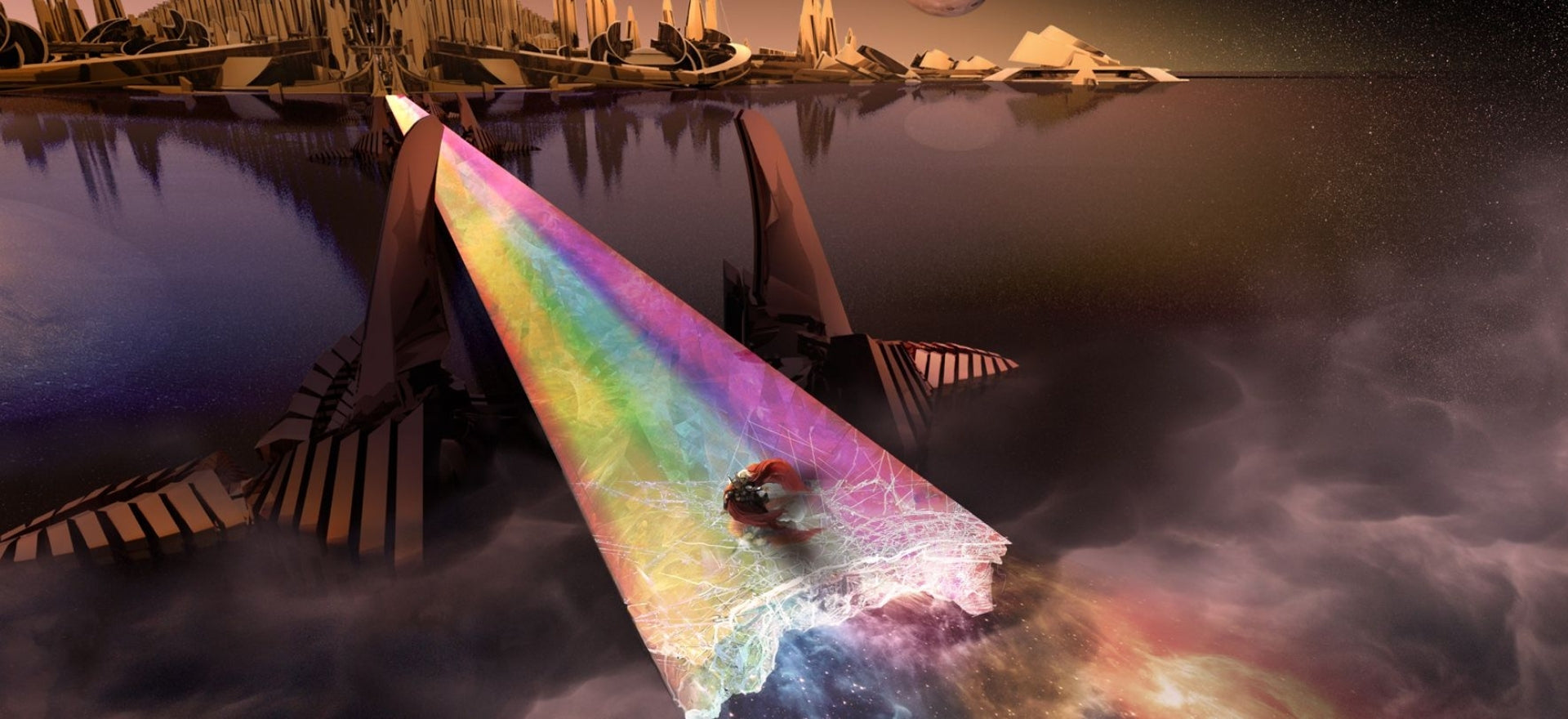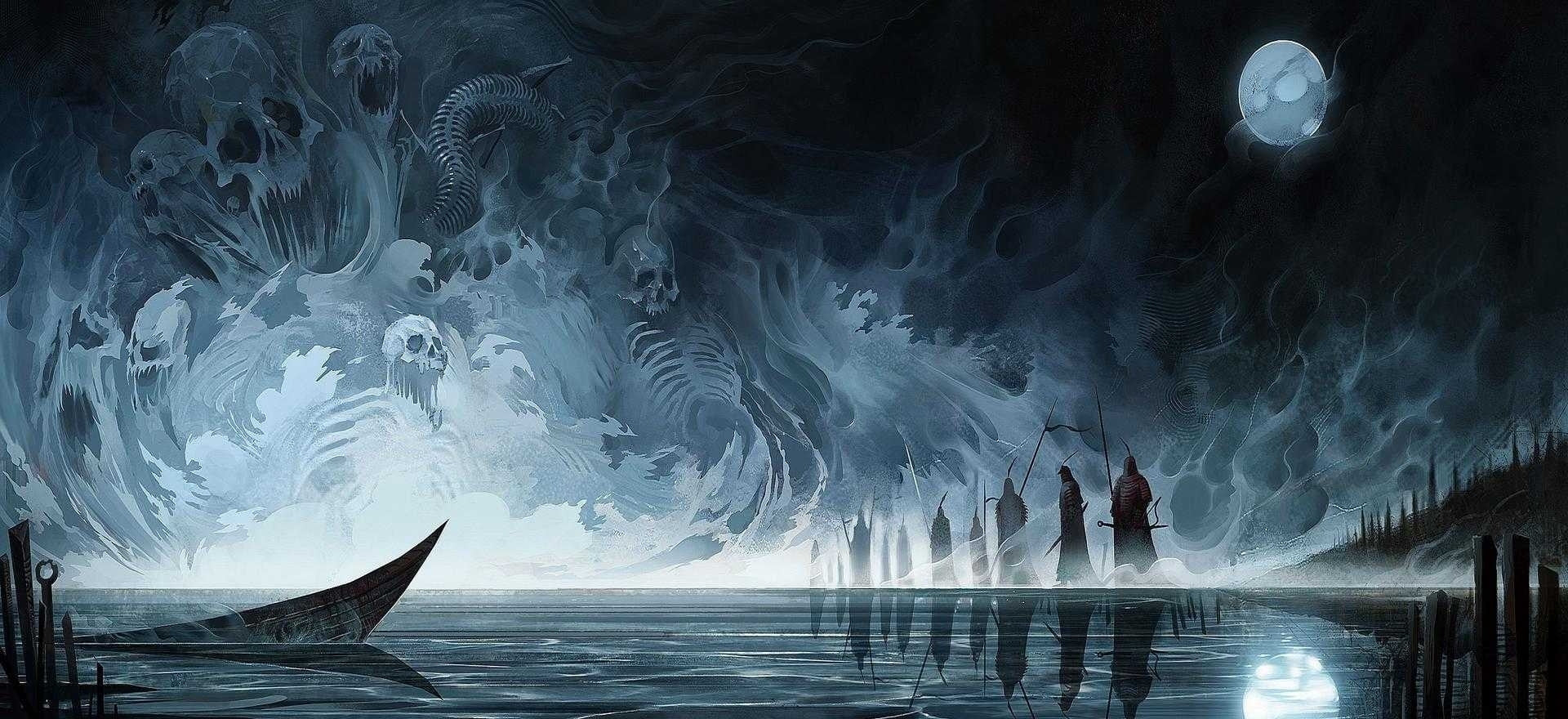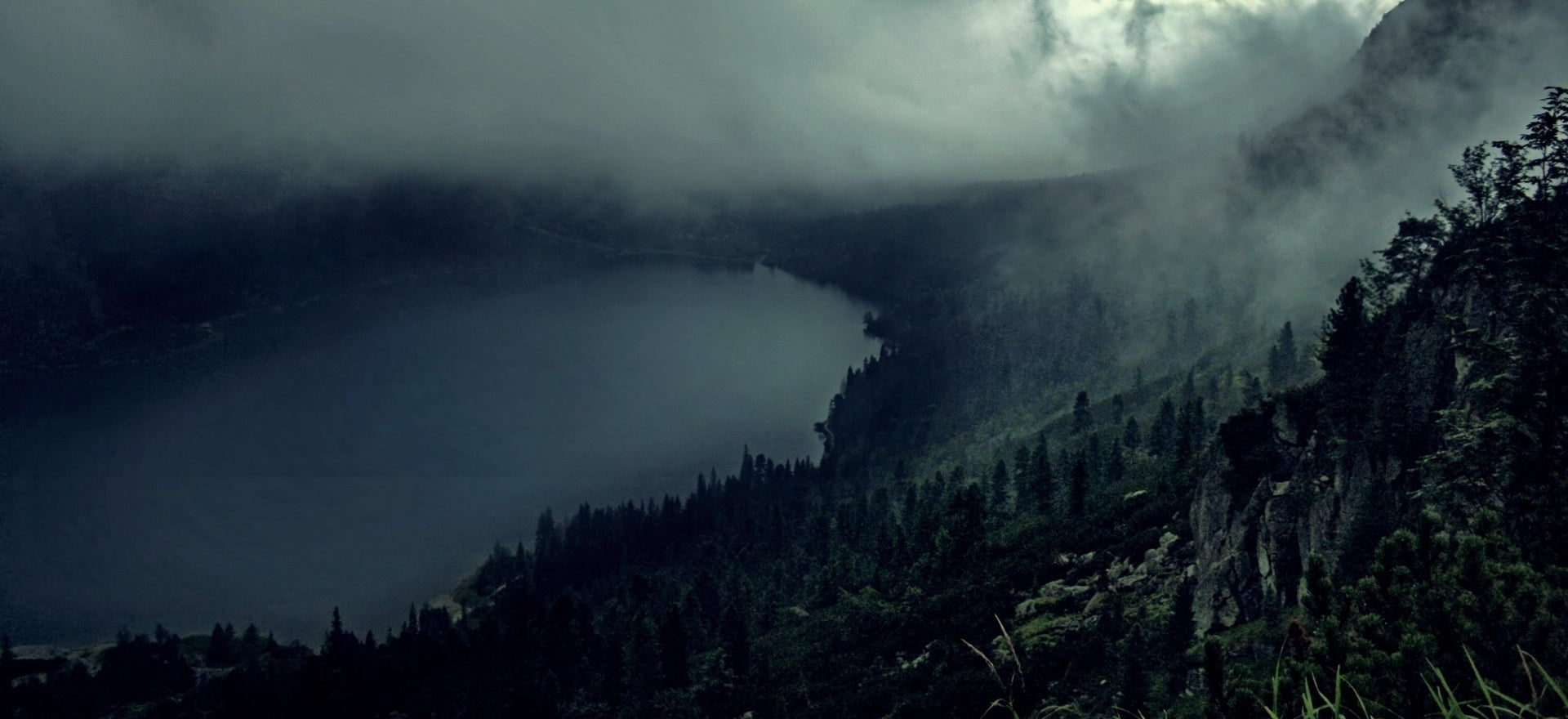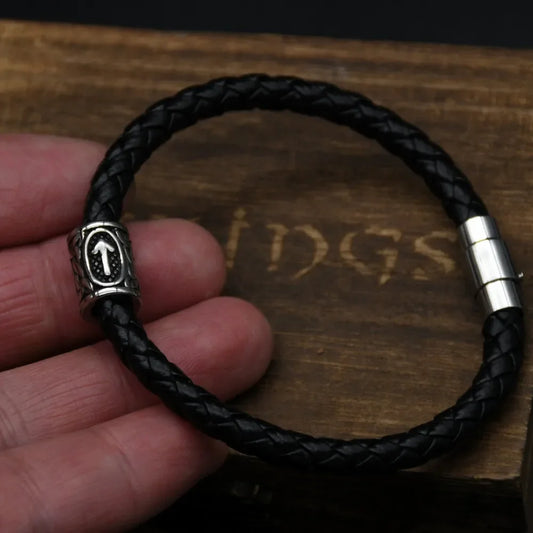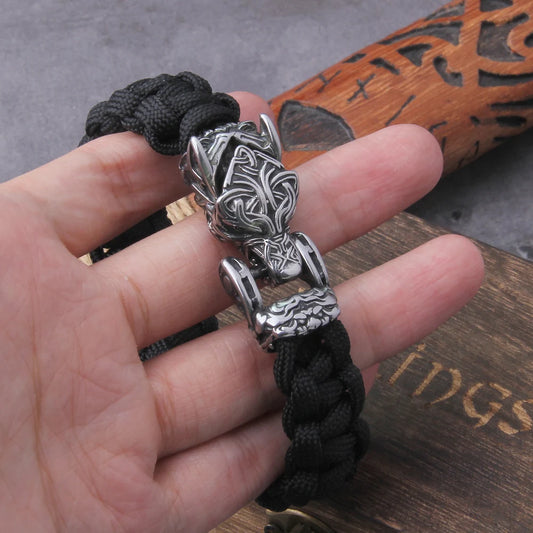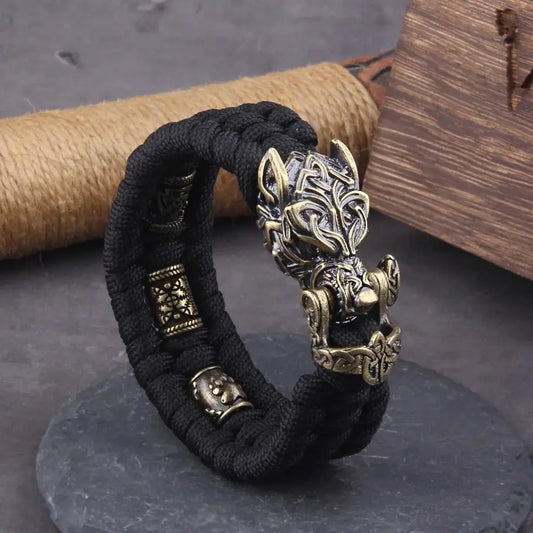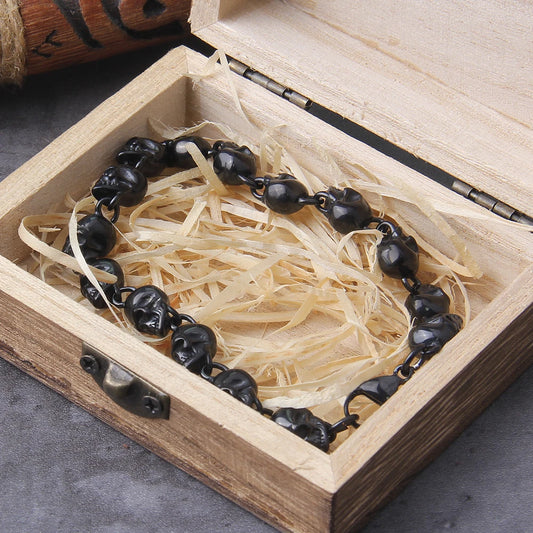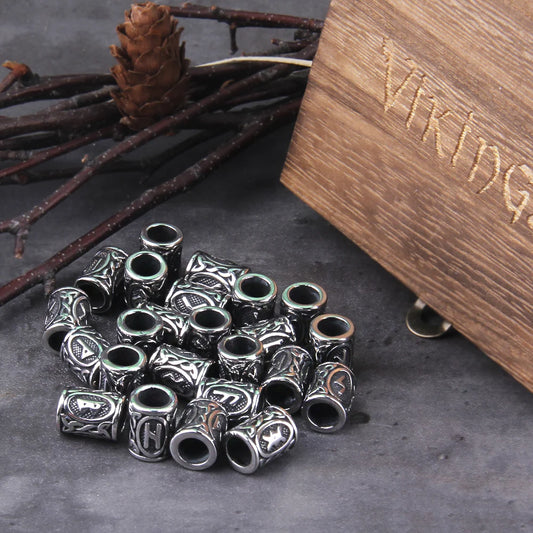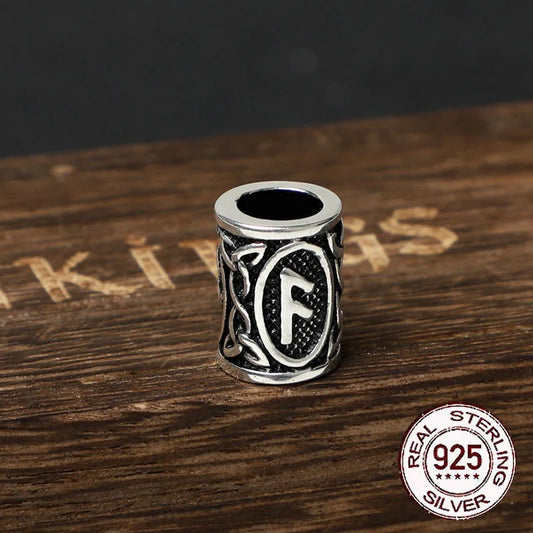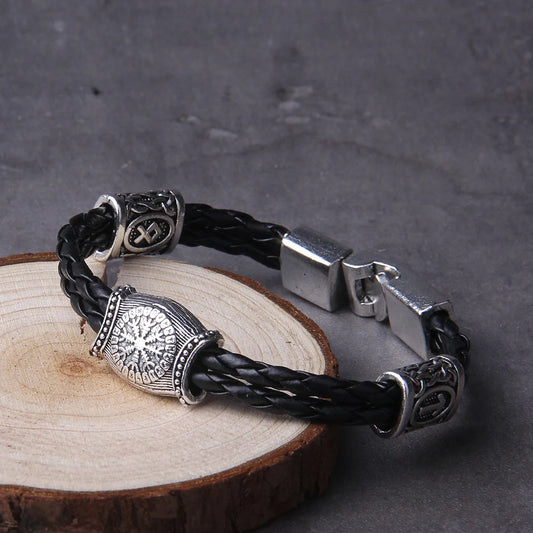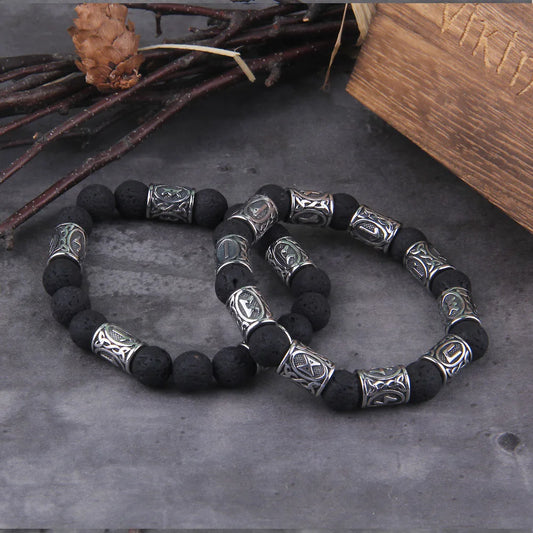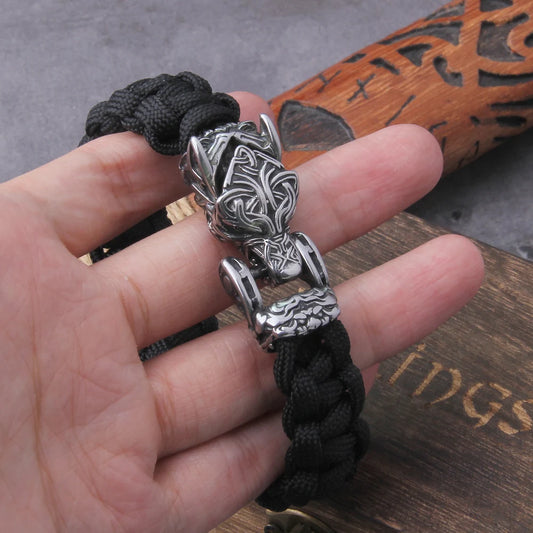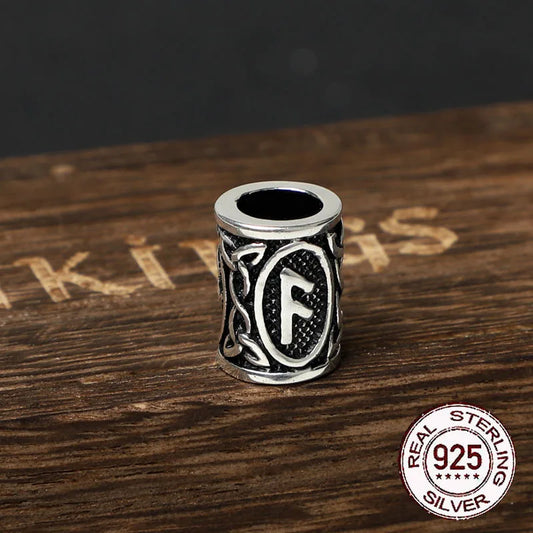Yggdrasil is a massive ash tree also known as the tree of life, or ash of the universe, in Norse mythology. Its roots and branches hold together the different worlds: Asgard, Midgard, Helheim, Niflheim, Muspellheim, Svartalfheim, Alfheim, Vanaheim and Jötunheim. From its root emanates the fountain that fills the well of knowledge, guarded by Mímir.
At the foot of the tree was the god Heimdall who was in charge of protecting it from the attacks of the dragon Nidhogg and a multitude of worms that tried to corrode its roots and overthrow the gods it represented.
But it also had the help of the Norns who cared for it by watering it with the waters of Urd's well. A bridge linked the Yggdrasil with the abode of the gods, the Bifrost, the rainbow, all the gods crossed it to enter Midgard.
Yggdrasil oozes honey and shelters a nameless eagle with a hawk between its eyes called Vedrfolnir, a squirrel called Ratatoskr, a dragon called Nidhogg and four deer, Dáinn, Dvalinn, Duneyrr and Duraþrórr. Near its roots dwell the Norns.
Etymology of Yggdrasil
Etymologically, Yggdrasil has been interpreted as a kenning, that is, a periphrasis derived from Norse myths. In this case, the kenning means "Odin's Horse", since Yggr (or Uggr, "fearsome, fierce") is one of Odin's appellatives, and Yggs is the genitive of Yggr; drasill (or drösull, "wandering, wanderer") is a poetic expression for "horse".
This name would apparently reflect the image of Odin ascending and descending at will up and down the trunk and branches of the ash tree, that is, metaphorically "riding" between worlds. Other authors interpret the name as "terrible tree" or "scaffold of the hanged", in reference to how Odin hung from it for nine days.
The Nine Worlds of Yggdrasil
For the Norse, the world of humans was just another branch of the great Yggdrasil, the ash tree of the world. Nine worlds possessed Yggdrasil, and through them Odin passed before obtaining the secret of the runes.The tree is divided into three parts: Niflheim (root), Midgard (trunk) and Asgard (crown). One can notice in this the representation of the cycle of birth, life and death already felt in the Norns.
The first is directed towards the Source of Hvergelmir. The second to the source of Mímir. The last to the House of the Norns, the Fate. The worlds are the following in ascending order:
- Helheim, the home of the dead
- Jötunheim, the home of the giants.
- Svartalfaheim, the home of the dark elves and dwarves (also known as Nidavellir).
- Vanaheim, the home of the Vanir (the tribe of nature and fertility gods).
- Muspelheim, the primordial world of fire, where the Ginnungagap is located.
- Midgard, the home of humans (also known as Mannaheim). The gods crossed the Bifröst bridge to reach Midgard.
- Alfheim, the home of the light elves (also known as Ljusalfheim).
- Asgard, the realm of the gods (Æsir).
- Niflheim, the realm of darkness and gloom.
There are variations to this classification. There would be another kingdom for the dwarves, Nidavellir; and, according to some texts, Helheim and Niflheim would be one.
Indeed, we learn in the Edda that Hel, daughter of Loki, inherited Niflheim from Odin, the primordial kingdom of the ice, where he built nine great houses.
Niflheim and Helheim are thus linked under the same name: Niflhel. This name can be found in the tale of Sleipnir's birth, when Thor slays the giant who had pretended to be a master worker with the Aesir in order to obtain Freya's hand as well as the Sun and the Moon.
However, it is also possible that Helheim is the realm of the dead, but in this case, the translation of Niflhel as Dark Hel (Nifl, being associated with mist) would mean that this realm is even lower than Helheim.
The sacred ash tree, the axis of the universe, took root in the body of Ymir and ascended to heaven after the creation of Midgard on the outskirts of the earth by the Aesir.
It is while hanging from a branch of Yggdrasil, pierced with a spear, during nine days and nine nights that Odin discovered the meaning of the runes.
The names of these worlds end with the suffix heimr (kingdom, world) or in some cases gardr (enclosure). In the second case, there is always a place with the same name located in the center of the world.
Current research based on the oldest sources suggests that the nine kingdoms all had heim names in the past (Midgard was then called Mannheim and Asgard Godheimr). The confusion would have come from some authors confusing the places of some worlds with the worlds themselves.
Yggdrasil in Modern Culture
In American Gods, Grimnir uses Yggdrasil to repair his Gungnir spear.
Yggdrasil makes an appearance in season 2 and the second novel (Fairy Dance) of Sword Art Online.
Yggdrasil is the name of the tree-ship of Het Masteen in the Hyperion saga by Dan Simmons. One could also associate this tree with the World Tree and the Grit Tree from the same saga.
Yggdrasil appears in two forms in the video game God of War: it is represented in the room allowing the player to move between realms, and also in the form of one of its branches in the "world between realms" which allows the player to move quickly within the same realm, as well as to access the door to Jötunheim hidden by Týr.
Yggdrasil is the name of the VRMMORPG of Overlord (light novel).
Yggdrasil also appears in the Vikings series, at the end of season 1, when Ragnar decides to accompany his teenage son Bjorn there, along with his future wife Aslog, daughter of the legendary Siggurd and Brunhild.
In several games of the Dragon Quest series, the Yggdrasil is a recurring element and its leaf can be used to resurrect a dead team member.
In The Secrets of the Immortal Nicholas Flamel (Michael Scott), the Yggdrasil is mentioned as a huge tree that existed at the same time as Danu Talis. Some of its seeds were saved by the Elders after the destruction of the island, and so the heroes spend some time in the Yggdrasil recreated by Hecate.
Yggdrasil is also the name of the server used to authenticate players of Mojang games, including Minecraft.
An engraving of Yggdrasil also appears in the movie Captain America: First Avenger, in which the blue infinity stone is hidden in a closed hole among the roots of the World Tree.
In the manga Black Clover, the magic of the captain of the golden dawn (magic of the world tree) refers directly to this tree. Moreover, one of the spells he casts in volume 24 is called The Budding of Yggdrasil.
In the game Assassin's Creed Valhalla, we can see the world-tree Yggdrasil in Eivor's visions, while travelling through Asgard and Jotunheim
In the game Valheim, you can see the huge Yggdrasil in the sky, day and night, surrounding the world.
In the game Odin Sphere Leifthrasir, Yggdrasil is represented as the fairy Mercedes, becoming the mythical tree after her death.
In the game Lightning Returns Final Fantasy XIII, Yggdrasil is located in the Ark with Hope Estheim. When Radiance is offered to him, it allows Lightning to extend the life of the world of Nova Chrysalia to a maximum of 13 days and thus delay the apocalypse. Each fruit represents an extra day for the world.


